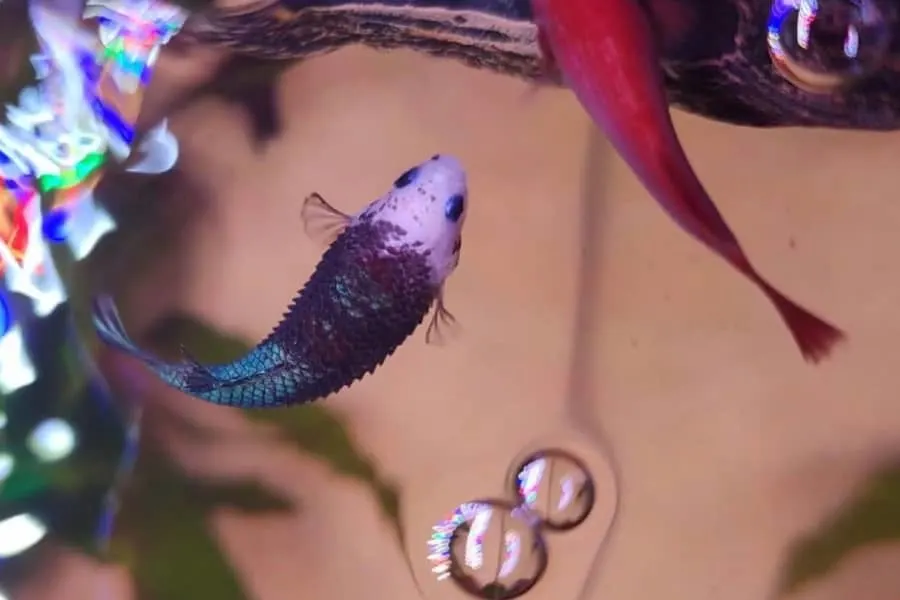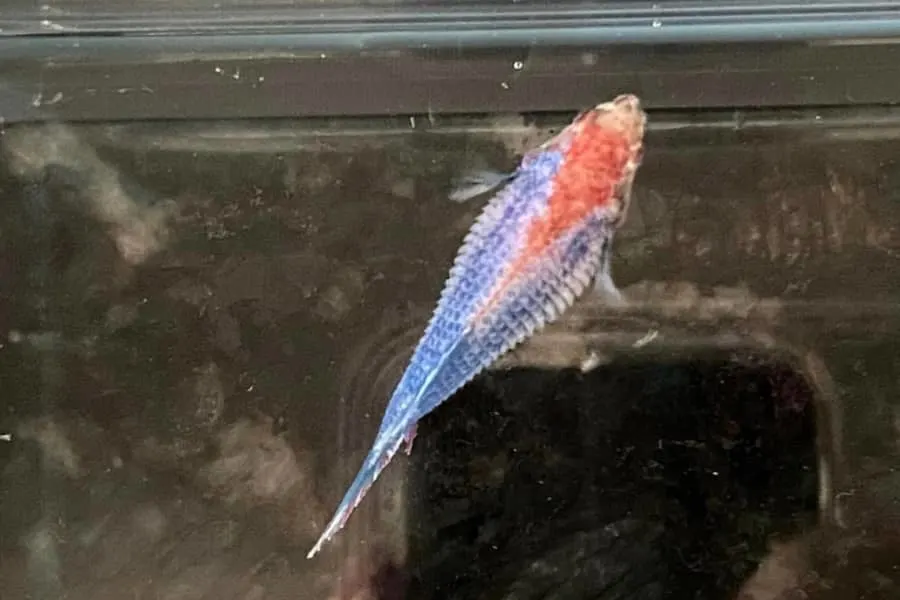This post may contain affiliate links.
With a shockingly low survival rate, Dropsy is one of the deadliest disorders in freshwater aquarium fish. If your colorful-finned friend has developed a bloated appearance that doesn’t seem to go away, it could be a sign of Dropsy. Although recovering from Dropsy is exceedingly rare, ones who are fortunate enough to catch the disease early, and be persistent with the treatment, might get lucky getting away with it.
To learn about Dropsy in detail, including its symptoms, causes, and remedies, read through the following sections.
What Is Dropsy?

Dropsy
Dropsy is not a disease, but a physical sign of an underlying health issue the fish is suffering from.
A fish with Dropsy appears to be bloated with its scales protruding out like a pinecone. This happens due to excess fluid retention in the abdominal cavity or inside the skin, usually caused by a bacterial infection, osmo-regulatory failure, or as a result of kidney dysfunction.
It’s pretty rare for a fish to recover from Dropsy, particularly in later stages – once it reaches the “pineconing and refusing to eat” stage. That’s the reason most fishkeepers recommend euthanizing the fish to put an end to the pain.
Symptoms of Dropsy
Apart from a swollen belly and raised scales, other symptoms of Dropsy include loss in color, reduced or virtually non-existent appetite, lethargy, and hiding behavior.
Dropsy Vs Bloating – How To Tell The Difference?
A bulge in a fish’s stomach is not always a sign of Dropsy. Sometimes, it’s a case of overeating that gives the abdomen a ballooning appearance.
Bloating, as a result of overfeeding, can be easily resolved by putting the fish on a fast and giving some sort of laxatives. On the other hand, the belly swelling caused by Dropsy is fatal and requires immediate treatment.
Dropsy can be easily misdiagnosed and confused with bloating caused by constipation. Here’s how to distinguish between the two:
- Take a close look at your fish from the top, and if the swelling has caused the scales to stick out from both sides of the body, resembling a pinecone shape, it’s Dropsy confirmed.
- When a fish is bloated because of overeating, the swelling is usually on the underside of the fish in the abdomen area. 3-5 days fasting accompanied with salt bath will almost always make the bloat go away.
- Long, stringy poop is an indication of constipation. But, if it’s white in color, start treating your fish for internal parasites.
What Causes Dropsy?
Kidney failure is the leading causative factor for fluid retention in the body cavity of a fish known as Dropsy. Organ dysfunction can be a result of a infectious or non-infectious disease, water pollution, or genetic causes.
Stress levels can also be linked to Dropsy as it affects the fish’s immune system in addition to kidney function. Common stressors in home aquariums include poor water quality, inadequate nutrition, overcrowding, and aggressive tankmates.
How To Treat Dropsy?

NOTE: Before you put any effort into curing Dropsy, know that, once a fish has reached the pineconing stage, the chances of its recovery are slim to none. If the Dropsy is caused by kidney failure (which is usually the case), it cannot be treated. Unfortunately, this condition is irreversible, and therefore, the only option you are left with is euthanasia. However, if the body swelling is due to some bacterial infection, then you may have a chance of getting away with it by using antibiotics.
Consider the following instructions as your best shot at saving fish from the deadly Dropsy.
Step 1: Perform Epsom Salt Bath
Before you do anything, check your aquarium water quality to see what’s going on with it. An optimal water quality is comprised of ideal pH, temperature, and toxin levels under control. If anything seems out of whack, take it as a potential stressor and fix the issue.
For instance, if the nitrate levels are high (20ppm or less is safe) you need to make water changes.
When you’re ready to perform an Epsom Salt bath, follow these steps:
- Grab a small container and add an adequate amount of Epsom salt (considering your fish tolerance) to obtain an appropriate salt concentration.
- Once the salt is dissolved, put your ill fish in it. Epsom salt baths are usually 10-15 minutes long. However, the length can vary depending on the salt concentration.
NOTE: Epsom salt or Magnesium Sulfate not only helps the fish expel the excess fluid through the skin but is also used as a laxative for bloated fish to aid constipation.
Step 2: Introduce Antibiotic Medications
KanaPlex (kanamycin sulfate) and MetroPlex (metronidazole) are the most recommended medications for treating Dropsy.
Seachem’s KanaPlex (available on Amazon) is a broad-spectrum antibiotic effective for treating bacterial and fungal infections in fish. MetroPlex (available on Amazon) is used for treating several protozoan and anaerobic bacterial diseases and in general is best suited for most internal parasitic infections.
Both medications are compatible. You can dose the aquairum with KanaPlex and use MetroPlex in food (if your fish is still eating).
Step 3: Keep a Keen Eye On The Fish
If you are fortunate enough to get rid of Dropsy, you still need to closely monitor your fish. Dropsy is notourious for coming back even after a fish appears to have fully recovered from the abdomen swelling.
As previously mentioned, Dropsy is an physical manifestation of an underlying health issue. So, as long as the internal cause remain untreated, the risk of Dropsy returning will remain present.
Enthanize The Fish Suffering From Dropsy
When a fish’s scales starts to protrude, it indicates that the condition has gotten out of hand, and euthanasia is the right thing to do at this point.
It’s a humane thing to put an end to your beloved aquatic pet’s suffering than letting it die a slow, painful death.
The clove oil method or anesthetic overdose are highly suggested for fish euthanasia.
Frequently Asked Questions
Can Dropsy spread to other fish?
While Dropsy isn’t usually considered contagious, it’s a wise idea to quarantine a sick fish. Particularly, due to the treatment procedure involving dosing the tank with Epsom salt and medications.
Between Epsom salt and aquarium salt which is more effective?
If your fish is suffering from internal issues such as bloating, swim bladder disorder, etc, use Epsom salt (magnesium sulfate). Whereas, for treating external issues such as fin rot, ich, velvet, etc, aquarium salt (sodium chloride) is best suited.
Conclusion
We hope, by now it’s clear to you that why Dropsy treatment success stories are rare. And rightfully so, there is no coming back from kidney failure.
Only the ones who are lucky enough to catch the infection early (before it leads to organ dysfunction), gets a chance in treating their fish of Dropsy.
